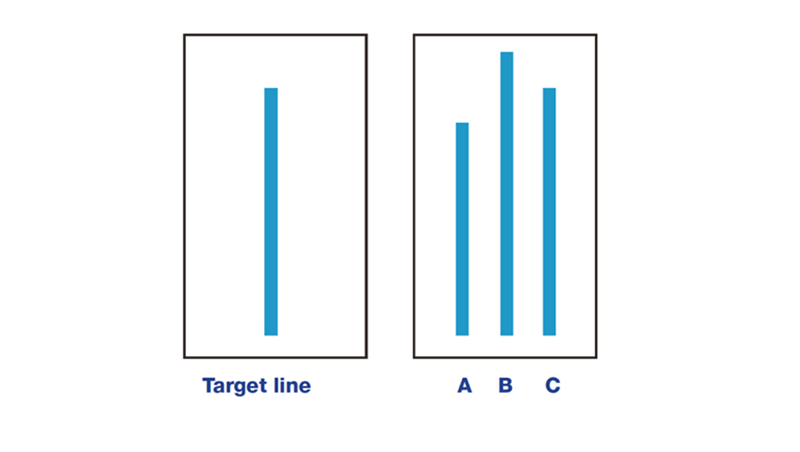Manufactured Consensus: What It Means To Be Truly Independent Today
What looks like popular opinion is often just agendas, influencers, and algorithms manufacturing an illusion that steers real-world behavior.
On this Fourth of July, while many celebrate America’s independence, it’s worth asking—especially for your younger population, Millennials and Gen Zers—how free are we really? Not politically, but mentally.
Because in today’s world, the chains aren’t worn on wrists—they’re tattered on the mind.
In 1988—one of the best years ever—Noam Chomsky, alongside Edward S. Herman, released their book, “Manufacturing Consent: The Political Economy of the Mass Media.”
The central thesis of the book is that mass media in the United States serve as a system of propaganda, promoting the interests of dominant, elite groups—particularly corporate and governmental powers—under the guise of objectivity and a free press (which we know about in today’s era).
The book was widely praised for offering a clear and systematic framework for understanding media bias and power, and I imagine that most of my Boomer subscribers are familiar with it.
However, times have changed. The media have become more elusive, and with the advent of social media, the original model proposed by Chomsky and Herman, although still in place, has undergone a dramatic transformation.
Even Chomsky himself has changed, falling prey1 to the same propaganda that he had warned about.
In today’s day and age, consent is still manufactured, but it’s done under a more subtle guise. If Chomsky and Herman’s book does anything, it shows us how the propaganda follows a “top-down” distillation method.
However, as I’ve learned in many professional experiences, if you want to truly influence change—in any arena—it must be a “bottom-up” transformation. And that’s what’s happened over the past 30+ years.
The advancements in technology have put the media in places that traditional media never could have gone, consistently bombarding its users with information.
However, the distinction here is that most people don’t buy into what’s being shown to them—but they “believe” everyone else is, thus falling into whatever “trend” is on their feed.
This is the new way in which consent is manufactured—not with legacy media, but with algorithms. And once you’re aware of it, you can immediately recognize its trap in your life.
I want to give a massive shout-out to the
on their video, “Why are People so Obedient?2” because it lays the groundwork for understanding why consent happens in the first place.In this article, we’ll discuss the following:
How Humans Are Biologically Designed to go with “The Consensus”
Two examples that impacted Millennials and Gen-Z recently (Airbnb and Trucking)
How to tap into our true “consensus” and social network.
Without further ado, let’s dive right in.
The Biology of Concensus
In the Academy of Ideas video, we’re introduced to the work of Solomon Asch. Asch was a psychologist, and in the 1950s, he conducted an experiment to see how much individuals would reject what they thought was true to conform to the majority.
From the article, we read:
In the experiment, Asch showed a test subject two cards. On the first card was a single line, and on the second card were three lines, A, B, and C, with only line C being the same length as the line on the first card. Asch instructed the test subject to state which line on the second card was the same length as the line on the first card.
However, before the test subject gave an answer, they witnessed 7 confederates – or individuals who were in on the experiment – state that line B was the same length as the line on the first card.
Rather than state the obvious truth, the test subjects gave the same wrong answer as the group 37% of the time, and of the 123 test subjects who took part in this experiment, two thirds (81 out of 123) went along with the group at least once.
Asch’s experiment confirms what philosophers have been reiterating for thousands of years: for most human beings conforming to what others say and do – no matter how objectively false or absurd – takes precedence over adapting to reality and discovering the truth.”
Hence why our parents would ask us: if everyone jumps over the bridge, do you jump?
What Asch’s experiment shows us is that humans are willing to conform to the actions of others due to social pressure. We would rather do what the majority is doing, rather than ‘adapting to reality and discovering the truth.’
This attribute appears to be a biological design that we’re born with—and I imagine it has some benefits—but it can also be harmful.
As a millennial poised to be the next workforce of America, two examples have been experienced with the concept of “the consent of the majority,” both of which have led to the demise of most of the individuals involved.
These would be the Airbnb Explosion and the Trucking Industry.
Let’s examine how the algorithm manufactured an illusory reality.
The Airbnb and Trucking Crazes
Between 2019 and 2021, Airbnb experienced a significant surge in popularity, particularly during the pandemic. With everyone locked down, social media became the only outlet to the outside world—and a lot of ‘influence’ was born.
With Airbnb, people saw it as a side hustle or “passive income” stream—a better use of their properties during lockdowns. To further influence people, we witnessed a lifestyle brand promoted by YouTube gurus, Instagram influencers, and TikTokers, who touted “financial freedom” through short-term rentals.
Platforms like YouTube were flooded with videos like:
“How I Made $10K/Month on Airbnb!”
“No-Property Airbnb Arbitrage in 30 Days!”
I remember this time as I had many people—at least 10—reach out to me telling me about the phenomenon. I had property at the time and was being told to “flip it into an Airbnb” by countless individuals.
To me, it just seemed like a “dot.com” boom waiting to burst at any minute. Something was holding me back from going into the Airbnb phenomenon.
But while Airbnb was booming, another industry was also being influenced by millennials and Gen Zers: trucking.
During the pandemic, supply chain disruptions and skyrocketing demand for shipped goods created a massive spike in freight rates.
Social media, again, especially YouTube, TikTok, and Facebook, exploded with trucking influencers claiming:
“Get your CDL and make $10K/month”
“Start a trucking company with no experience!”
This created a surge in new independent owner-operators, a boom in people leasing or buying trucks—often on credit —and individuals jumping into dispatching, freight brokering, and non-CDL box truck operations, fueled by promises of easy money.
Again, I recall a plethora of people reaching out to me regarding trucking, but like Airbnb, I just wasn’t sold on it.
Then, the crash happened.
For Airbnb, in 2022, the downsides started to show. Many factors contributed to the bust, such as:
Oversaturation: Too many hosts, not enough travelers.
Crackdowns: Cities started enforcing stricter regulations and zoning laws.
Hidden Costs: Cleaning, maintenance, guest damages, and algorithm changes.
Customer Backlash: Rising fees, bad service, and “Airbnb Hell” stories went viral.
Economic downturn: Travelers cut back, and high mortgage rates hit owners hard.
Many people lost a lot of money as the industry underwent rapid changes. Similarly, the trucking industry was also affected.
As the economy cooled, the price to ship goods by truck dropped drastically. Additionally, fuel prices soared, eroding profits.
Inflation and interest rates rose, making it harder to finance trucks or stay afloat. Many new entrants who flooded the markets didn’t understand overhead costs, regulation, or maintenance, leading to repossessions skyrocketing, and used truck prices tanked.
Ultimately, this led to:
Thousands of new trucking companies going out of business.
A bunch of used trucks on the market.
Drivers stuck with debt, no freight, and no plan.
These two examples are personal examples that I was closely tied to. As young adults during the pandemic, we were trying to make the best of things, but were getting influenced from so many angles—and this doesn’t even include the vaccine piece.
What I found interesting is how consent was generated among millions, which swiftly led to decisions. From vaccines to trucking and more, what we’re consistently seeing is that the old way of manufacturing consent is no more, but instead a DTC version (direct-to-consumer).
And if all your consumers are plugged into the same algorithm, there’s a likelihood that they all believe what they’re seeing and begin to be influenced to take actions on those things.
Your True Social Network and Consensus
I can say that due to my study of media, it makes it easier to spot synthetic social trends, so it’s easier to discern through the fallacies thrown at us.
In previous articles, such as “4 Reasons Not to Watch the News,” one of the reasons is that there is no business benefit to watching the news.
It’s hard at first to comprehend, but ultimately, if something were going to be advantageous for you, you would most likely have eyes on it, rather than having a news station or influencer tell you about it.
Then there’s the whole aspect of “algorithms.” These feeds are designed to cater to your likes, but they will push ideas that are “trending” as well.
This phenomenon is precisely how we get a “consensus” of things to do, because if everyone’s talking about it, then we must do it, right?
Wrong. Infatuatedly wrong.
According to the book mentioned in the video, “Collective Illusion: Conformity, Complicity, and the Science of Why We Make Bad Decisions,” many societal beliefs, trends, and movements are based on illusions rather than actual consensus.
Mistaken assumptions about what others think.
From the AOI article, we read:
“Our inclination to go along with what we think is the consensus makes us vulnerable to propaganda and easily manipulated. For one of the primary ways that governments, corporations, and global institutions influence public opinion and shape mass behavior is by manufacturing illusions of consensus.
They harness the power of the mainstream media and social media for the express purpose of making it seem as if the majority supports certain agendas, ideologies, and mandates.
Slanted narratives, biased reports, rhetoric that appeals to emotion, misleading “fact checks”, outright lies, dubious opinion polls, and social bots are some of the weapons used in this subtle form of psychological warfare.”
Read my article on Critical Thinking to be aware to your biases.
In short—don’t trust the new or anything you see on social media. And now with AI and deep fakes, you should definitely stay away from all things on those platforms.
But what can you do to stay connected? We’re socially and biologically wired to move in social circles.
Here’s where I bring back the Myspace Top 8 concept.
Myspace was the first social network experiment before Facebook, dating back to the early 2000s. What was interesting about it was that you had a “top 8” friends that you could select from all the friends that you had.
This idea is solid because it should represent our circle of friends.
Anthropologist Robin Dunbar has shown that humans can maintain stable relationships with about 150 people, but within that group, only 5–15 people are in the inner circle—our emotionally closest and most trusted connections. These are the people we rely on for advice, support, and meaning.
This group should also be varied. A curated, grounded “Top 8” of diverse, real-life thinkers offers more wisdom and a broader range of experiences, sharpening ideas as well.
This concept is how humans communicated in groups and villages—before the creation of the very first form of media, the printing press, was born. Hence, true revolutions were able to occur because within these 5-15 in alignment—not manufactured consensus—the truth of reality was able to spread, rather than any illusions the kingdom was trying to disperse to the population.
The fact of the matter is that social media lies. It spreads fallacies. That’s what it does. MIT researchers found that falsehoods on Twitter are 70% more likely to be retweeted than truth. Social media amplifies illusions of majority opinion through likes, trends, and comments, rather than truth or real-world accuracy.
Research shows we are better able to judge the credibility of people we know personally. Relying on personal networks counteracts this by providing firsthand experience, rather than secondhand perception.
When you replace mass consensus with real-life conversations, you reduce illusions and increase authentic, contextual understanding.
It’s time for us to regain our individuality in thought, truth, and in the fundamental nature of consensus.
Closing Thoughts
It’s safe to say that our idea of consensus—especially in any media-driven platform—can be seen as a fallacy. What appears to be “popular opinion” is usually the result of agendas, influencers, and algorithms working together to manufacture an illusion of reality that steers real-world behavior.
With today being July 4th, a celebration of independence, it’s time to really become independent. Let’s discard the false narratives and illusions that look to pull us into groupthink. A group is much easier to control than individuals, which is why we’re consistently drawn into it.
We must resist the hive mind at all costs, and fortunately, it appears we are. As more and more people wake up to the illusions that have been painted in society, we are slowly discarding fallacies for the real, thus building actual steps towards a viable future that we control.
As always, thank you for the time and attention in reading this article. Below are the articles referenced in this piece. I wish you all the best this Independence Day Celebration for those in the States.
Ashe,
Franklin O’Kanu
Unorthodoxy is a reader-supported publication. If you enjoyed this post, support this work by becoming a paid subscriber
Related Content
Call To Action
If this article opened your eyes, there’s more behind the paywall. Exclusive, in-depth pieces that go deeper, challenge more, and reveal the truths they don’t want us to see.
🔑 Become a paid member and gain access to premium and archived articles, exclusive podcasts, and thought-provoking chats you won’t find anywhere else.
📖 Prefer a comprehensive take? My book, An Unorthodox Truth, is a fact-based journey through 200 years of deception—a must-read for those seeking clarity in a manipulated world.
If you’re already aware but want to take a step toward becoming the best human you can be, you can check out my guide.
11 Insights for Being The Best Human This 50-page guide is the clearest map I’ve created for navigating the madness of modern life. It blends ancient wisdom, spiritual clarity, and grounded daily ritual — helping you remember who you are and why you’re here.
If the world feels off, this guide will confirm why — and help you take back control.
☕ Feeling generous? Leave a simple tip to support this work—every bit helps me continue creating meaningful content.
Notes and References
https://www.independent.co.uk/tv/news/noam-chomsky-calls-for-unvaccinated-to-be-isolated-from-society-b2182947.html
https://academyofideas.com/2025/06/why-are-people-so-obedient-compliance-and-tyranny/













It’s the reason for the “Like” button. It’s known that if you have friends who wear a certain brand, you’re more likely to wear it. The “Like” button works similarly. And we learned that many of the accounts on social media were fake.
This “follow the masses” is hard wired in people and animals. The best example that I’ve heard for it comes from (I think) Robert Cialdini’s Influence: The Psychology of Persuasion - good book regardless. If you’re an antelope grazing in a field with a bunch of other antelopes, and all of a sudden the others start running; you run too. To wait and try to see why they’re running before you start to, could mean you become the leopard’s lunch.
Modern convenience has made most of our survival instincts easily used against us to manipulate us. Even stress. The body is preparing to physically counter a foe. Today, you’re sitting at a desk having to deal with a “foe” - your manager - criticizing you because you didn’t use the new version of the cover sheet for your TPS report. (from the movie Office Space).
I've been thinking about this phenomenon too, Franklin. It's like we've become profit farms where we take on all the risk, expense, maintenance, work and all the online conglomerate skim the profits with no downside. I turned my Appalachian childhood home into an AirBnB but as a labor of love, to turn around a place that was in decline--the house, the neighborhood, the town. It likely will never make back the money I've put into it, and that's okay. But I want the town--and a network of other towns--to be making money on the fees, not milking renters for state, county and city taxes while the algorithms extract the cream.
And to your other point, my handyman's uncle there in impoverished WVa, took his life when the price of diesel went up. As a self-employed trucker, he could no longer make a living. So YES, what you're saying is real.
On a side note, you may have noticed that I recently canceled the paid sub you had so kindly gifted me. I've been doing the same with other gifted subs. I thought that I wanted to be the same as everyone else and have my list of paid subs be only those I actually paid (female Middle East reporters seems to be the common theme!) But I almost immediately regretted it, when you posted something I wanted to read further. So I just wanted to let you know that it was a policy shift of mine, not personal. I love your work!